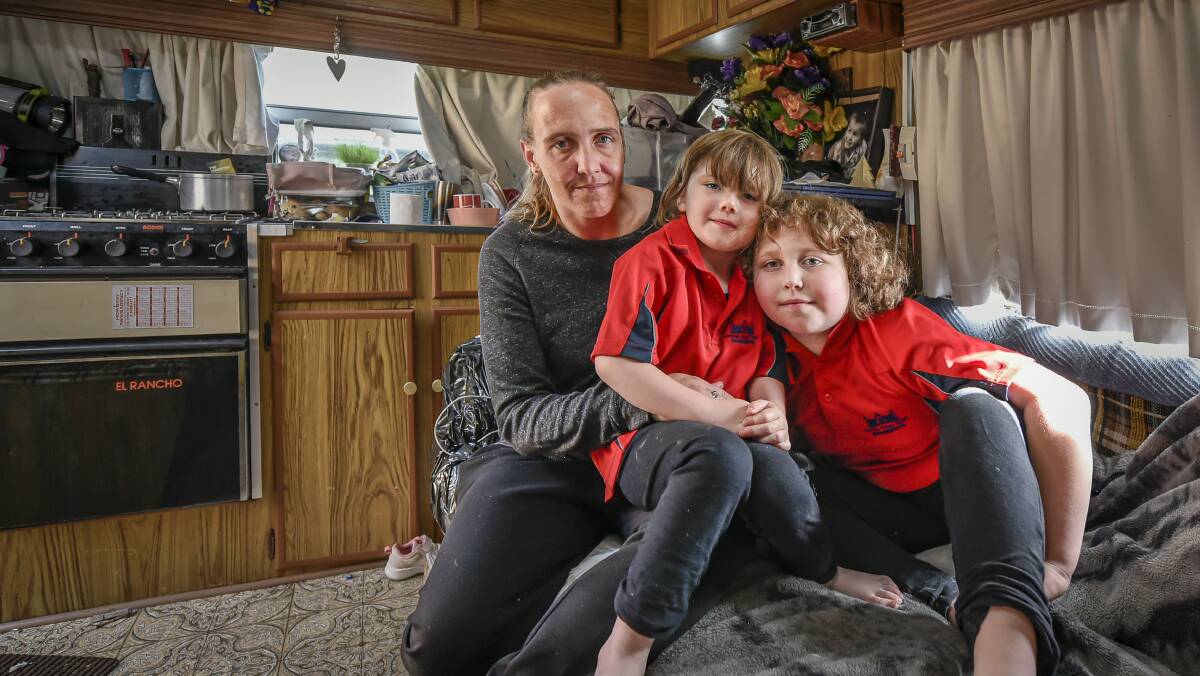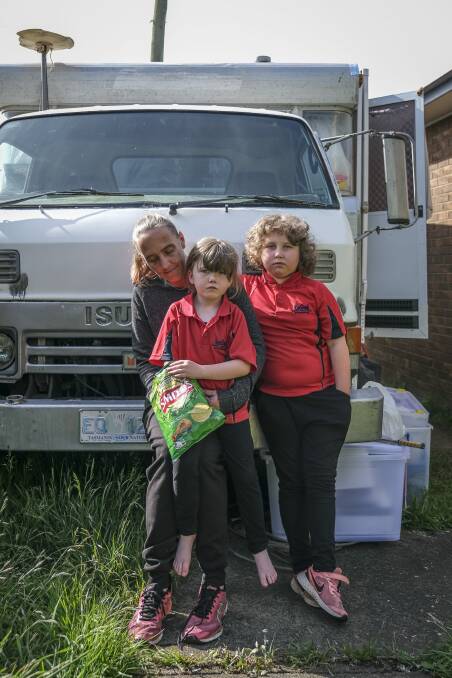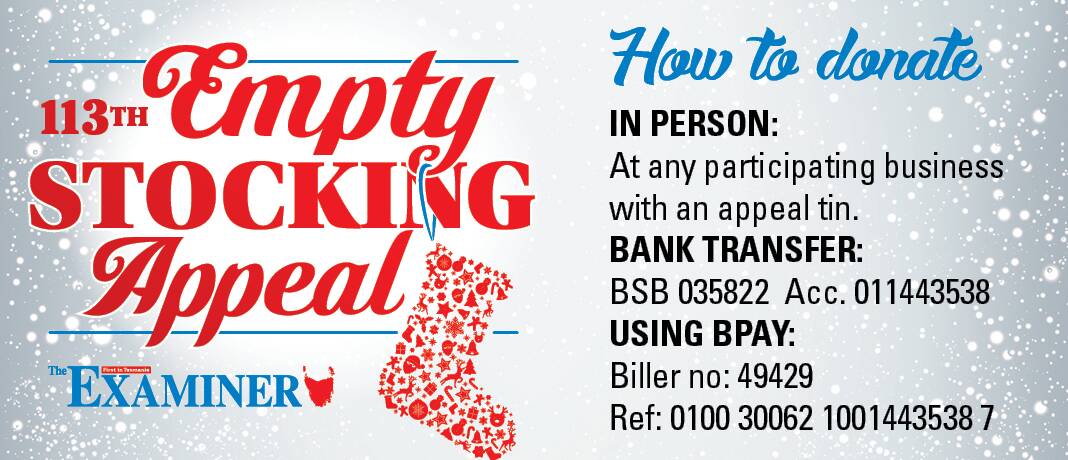
With housing affordability continuing to shrink and the waitlist for housing assistance growing, Northern Tasmanians are being forced to take dire actions to ensure they have a safe place to sleep at night.
Subscribe now for unlimited access.
$0/
(min cost $0)
or signup to continue reading
After more than two years without access to secure housing, Launceston mother-of-two Stacey Lodge has spent the past month living in a rented campervan she's parked in the carport of an unused property in Invermay.
Ms Lodge's struggle to find a permanent place for her and her children began in 2019, when she was evicted from a rental in Waverley.
As the pandemic hit and housing in regional Tasmania began to tighten, Ms Lodge found herself unable to secure a lease for the few properties she could still afford.

"Rentals are getting 30 or 40 applications and they won't give you a look if the rent exceeds 33 per cent of your income - especially single parents," she said.
Since then, Ms Lodge had been moving between a string of temporary accommodations, sometimes through government programs or shelters, other times staying on friends' couches or paying high nightly or weekly rates at hotels to ensure her children had a roof over their heads.
"I'm starting to run out of options," she said.
In her desperation, she put an ad up online searching for accommodation and was contacted by a group posing as a real estate agency, which fraudulently leased her a property, took $1400 from her in 'bond' and handed her the keys.
"I had no idea it was a scam, until the police turned up and told me to get out," she said.
After two years of waiting and with no permanent accommodation in sight, Ms Lodge rented a campervan and moved into a carport attached to a disused property in Launceston's northern suburbs - where she and her children remain today.
Ms Lodge said stories like hers are becoming more common in the area.
"I know ten other homeless people around here going through the same thing," she said.
Despite receiving a letter notifying her that she must move the campervan from the property, Ms Lodge remains adamant that something has to change.

"I know I'm digging my heels in but I'm not moving from her until I can find somewhere we can stay permanently," she said.
More than for her own sake, Ms Lodge's concern and frustration is for her children, aged five and eight.
"I'm just trying to keep them in school."
Ms Lodge's story is one of many emerging from a protracted and deepening housing affordability crisis, which, according to a recent report, has only worsened.
Rental stress mounts
Regional Tasmania is now the least affordable area in Australia for rental properties, with affordability in Launceston and Burnie deteriorating significantly in the past year. The Rental Affordability Index, an annual report, said that regional Tasmania "remains the least affordable of the rest of state areas studied", but noted the region had taken a further tumble since 2020.
The report is produced by National Shelter, SGS Economics & Planning, the Brotherhood of St Laurence and Beyond Bank Australia.
Regional Tasmania as a whole has a RAI score of 103, representing a significant decline from 114 the year before. The higher the score, the more affordable, and anything below 120 is considered unaffordable.
That score is based on the average rental house gross income of $59,200 in regional Tasmania.
Launceston has a score of 94, based on that income, while Burnie has a score of 119.
The picture is even more grim for those households reliant on government benefits for income.
Burnie scores just 59 for affordability for a single person receiving benefits, while Launceston scores just 46, making it "extremely unaffordable" (the most severe category of unaffordability).
Report author Ellen Witte, a partner at SGS Economics and Planning, said that migration from capital cities during the pandemic had worsened affordability in areas like Launceston, as well as coastal hotspots on the mainland.
Part of the reason regional Tasmania was so hard hit was because rental households in the state earned less than those in other states.
"A lot of households chose to escape the cities due to extended lockdowns and as a result of that we saw households moving out and pushing up the rental rates in regional areas," she said.
"We've seen pretty much a tripling of migration flows from cities to regional areas ... for regional areas it makes a big difference if there's all of a sudden 7000 extra people in the region," she said.
The average rental household in Launceston would now be spending between 30 to 38 per cent of their income on rent. For a single person on benefits, it would be 60 per cent or more.
What do you think? Send us a letter to the editor:




